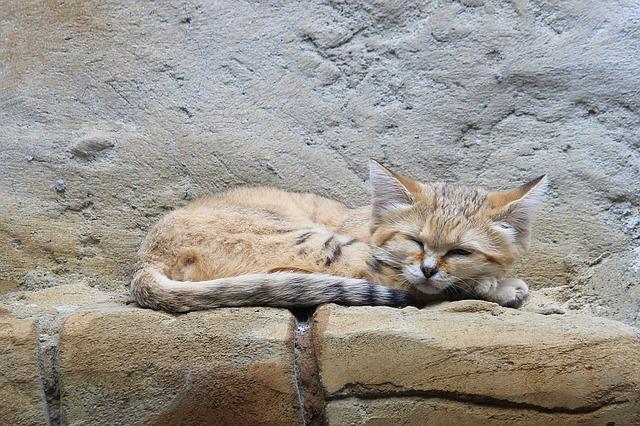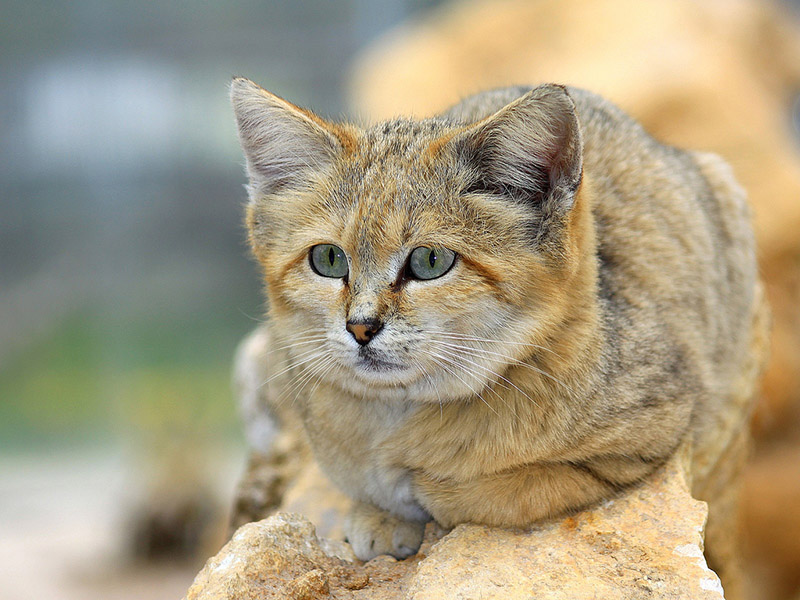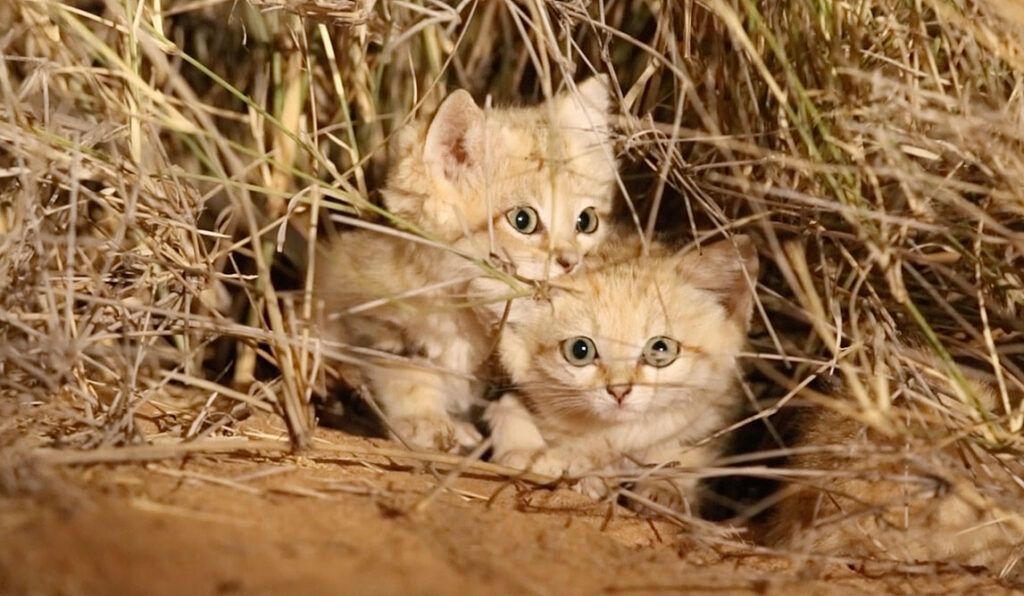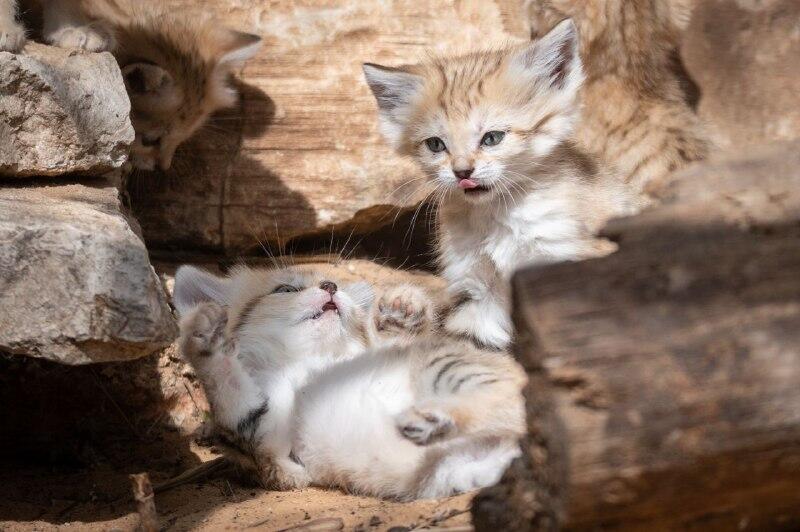When asked to name desert creatures, most people will mention common animals such as camels, meerkats, venomous snakes, and scorpions.
The sand cat is at the bottom of the list for many. Well, to be honest, this adorable feline, the size of the housecat is pretty rare.
For one, he lives deep in Asian and African deserts where he has very little interaction with man.
Secondly, this kitty is not one to play during the day. Spotting one is very difficult even if you visit the desert frequently.
Another sad reality about sand cats is that they are endangered. They are much fewer in number than they were decades back.
In some countries, zoos have taken it upon themselves to breed and preserve the species.
In 2002, the cats were listed as “near threatened” by the IUCN. Although the numbers have gone up since, they are still endangered.
Why is this case? We will explain this in detail in this post.
Habitat Loss and Habitat Degradation

The number one reason for decreased numbers of sand cats is the human encroachment of their habitats.
No doubt, humans are always looking for more land for road expansions, livestock farms, living space, mining grounds, and agricultural lands, you name it.
These actions reduce the amount of habitat for this wild cat, ultimately affecting the welfare of the sand cat in many ways.
For one, it prevents the safe movement of the animals across their landscape and restricts their access to food, shelter, and water.
Secondly, such changes cause stress, illness, pain, and death. Some of the activities such as the building of roads directly murder the cats.
The silver lining is that deserts are a little further from the usual human settlements.
Although habitat loss and degradation is a reality, it takes place at a lower degree compared to other desirable habitats such as forests and mountains.
Nevertheless, sand cats will keep going down in numbers if nothing is done to save their habitat.
Sports Hunting
Gone are the days when hunting was the primary way of survival for the human race.
Now, the majority of the global population gets food without having to go into the wild and hunt.
Well, that is unless they are sport hunters. These are the people who practice hunting for the fun of it. They do it to entertain themselves, enjoy the company of their friends, or participate in award-winning events.
Sand cats, sadly, fall prey to sports hunters from time to time. This, too, has contributed to their endangered status.
Pet Trade

Although they are wild and ferocious, sad cats are small in size and easy to hunt.
People who participate in the illegal pet trade find them to be easy targets.
Some hunt the poor animals to sell them for thousands of dollars on the black market.
Because of their uniqueness and rarity, sand cat kittens fetch a good price in the market.
Besides the actual pet trade, unscrupulous businessmen also sell these sweet animals for their fur. They boast soft, thick fur which is in high demand.
Luckily, some countries have banned poaching of the sand cat but there are many more than don’t have strict rules and regulations on the same.
Wars in the Gulf
According to the IPL, sand cats population first fell during the Gulf War. This is the 1990-1991 international conflict triggered by the invasion of Iraq on Kuwait.
Many bombs, explosions, and guns went off in and around the gulf ultimately killing a large number of sand cats.
The war went on for over a year with the helpless cats being blown all over the place or accidentally gunned down.
Senseless Killing
Another reason for endangered sand cats is the human killing of the cats to preserve their animals or family members.
Because they are wild, some people think that these creatures are a threat to their sheep or kids.
However, that couldn’t be further from the truth. This cat sure hunts sand and horned vipers but they pose no threat to livestock and humans.
Loss of Prey
With habitat loss and habitat degradation comes the loss of prey.
Sand cats are carnivores and depend on a wide variety of desert creatures to survive. These include the sand viper, horned viper, rodents, lizards, gerbils, hares, sand voles, and small birds.
When their habitat is compromised (through off-road driving, land conversion for agriculture, overgrazing, and civil strife), the prey base is reduced.
This ultimately leads to competition between sand cats. Unfortunately, some of them don’t make it.
How Many Sand Cats Are Left In The World?

Sand cats are some of the hardest animals to track.
The fact that they are solitary makes it hard to gather their numbers. Each animal (except females with their young), practically lives by itself. That means the animals are spread across the vast wilderness.
To complicate things even further, spotting them is quite a tall order. Most of them hide in burrows during the day. They only come out to hunt at night.
When tracked using night cameras, they will close their eyes to avoid any reflection.
That means data on the number of sand cats is limited. Cats.org puts the number of the wild cats at about 27,264 mature individuals. The number is potentially higher or lower but this gives a rough estimate.
Parting Thoughts
Sand cats, the only cats to live in the desert, are cute little balls of fur.
Sadly, they are among the many endangered species we have in the world today.
Blame it on habitat degradation, habitat loss, the Gulf War, loss of prey, sport hunting, and senseless killing by humans.
If humans woke up to the fact that these cats are declining fast, they would do better by them.
If you are up for a little light reading, here are some insightful posts about these cute wild felines:

Hi! I am Eleanor Price. I started this website after my cat, Louie, almost died from a case of botulism (a type of food poisoning often caused by bacteria that grow on food items). Turned out that my cat’s diet was the problem. I have made it my duty to provide the best information and recommendations about everything cat lovers need to know about their felines’ health and wellbeing. My goal is to find the most informative content on anything feline-related and share it with fellow hardworking kitty lovers.

